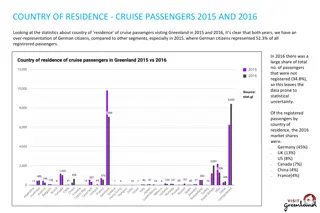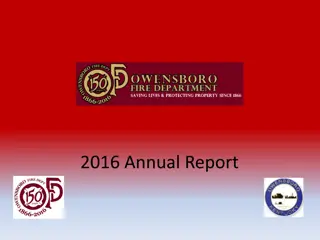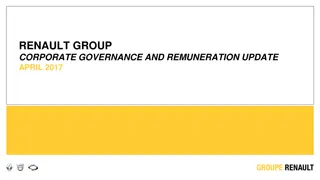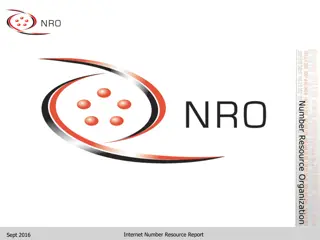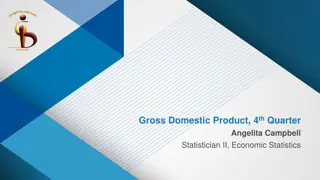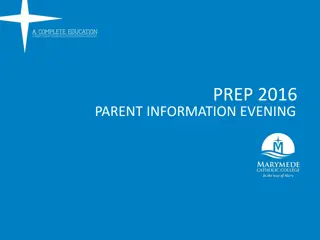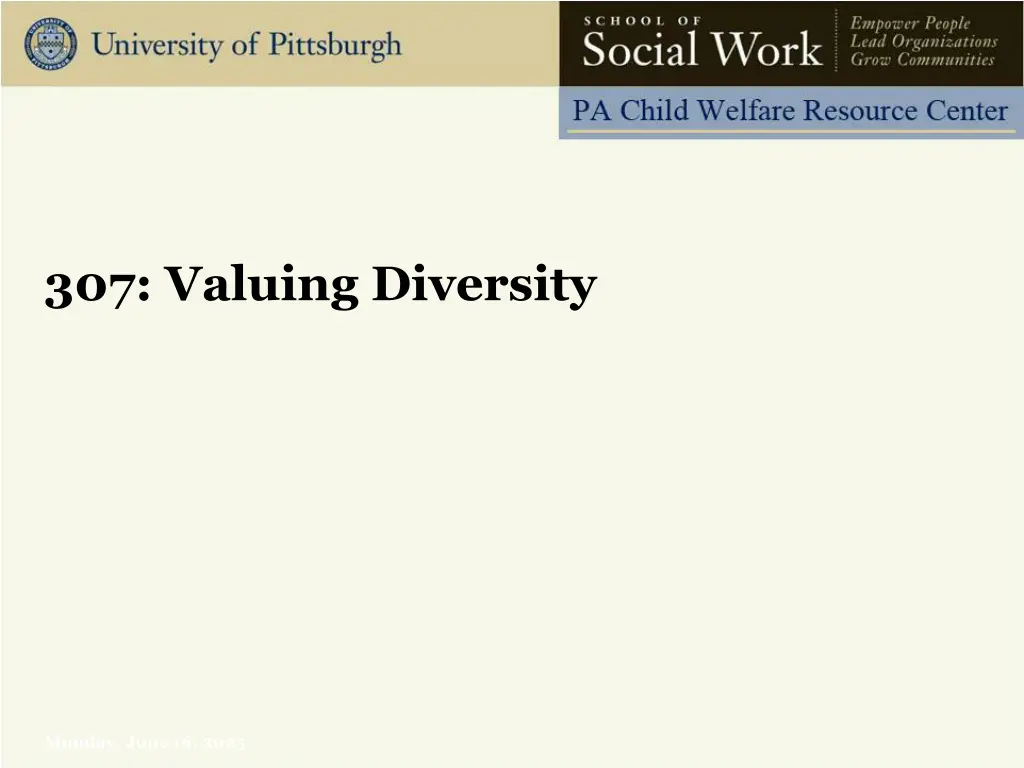
Understanding Cultural Diversity for Effective Communication
Explore the concept of cultural diversity, cultural competence, and cross-cultural communication. Learn to identify and understand cultural values and beliefs, develop cultural awareness, and enhance communication skills for a more inclusive approach in professional settings.
Download Presentation

Please find below an Image/Link to download the presentation.
The content on the website is provided AS IS for your information and personal use only. It may not be sold, licensed, or shared on other websites without obtaining consent from the author. If you encounter any issues during the download, it is possible that the publisher has removed the file from their server.
You are allowed to download the files provided on this website for personal or commercial use, subject to the condition that they are used lawfully. All files are the property of their respective owners.
The content on the website is provided AS IS for your information and personal use only. It may not be sold, licensed, or shared on other websites without obtaining consent from the author.
E N D
Presentation Transcript
307: Valuing Diversity Monday, June 16, 2025
Agenda THE CONCEPT OF CULTURAL DIVERSITY Culture Definitions Characteristics of Culture Cultural Competence Steps to Achieving Cultural Competence IDENTIFYING CULTURAL VALUES AND BELIEFS Origin of Values and Beliefs Exploring Our Values and Beliefs The Cycle of Prejudice and Oppression Suggestions for Maintaining Objectivity and Productivity The Pennsylvania Child Welfare Resource Center 307: Valuing Diversity
CROSS CULTURAL COMMUNICATION The Four Minute Sell Communication Tendencies The Cultural-Context Inventory General Principles of Effective Cross Cultural Communication Some Cultural and Communicative Tendencies of Four American Subgroups TAKING ACTION Ally Behavior Cultural Diversity Continuum Increasing Cultural Competence in Services Next Steps The Pennsylvania Child Welfare Resource Center 307: Valuing Diversity 3
Competencies and Learning Objectives The Competency: The child welfare professional understands the concept of cultural competence; knows how one's own culture affects behavior and values; and knows how cultural and ethnic differences may affect the delivery of child welfare service The Pennsylvania Child Welfare Resource Center 307: Valuing Diversity 4
Learning Objectives Participants will be able to: Define the primary and secondary dimensions of culture, cultural diversity and cultural competence Identify characteristics of culture Identify their own cultural values, how these values contrast with cultural values of others, and the impact cultural values have on one's attitudes and behaviors Recognize the various aspects of cross cultural communication Develop techniques to increase cultural awareness The Pennsylvania Child Welfare Resource Center 307: Valuing Diversity 5
Culture is the framework that guides and bounds life practices; not a rigidly prescribed set of behaviors or characteristics, but rather the framework through which actions are filtered or checked as individuals go about their daily life. The Pennsylvania Child Welfare Resource Center 307: Valuing Diversity 6
Definition of Culture Culture represents the vast structure of behaviors, ideas, attitudes, values, habits, beliefs, customs, language, rituals, ceremonies and practices "peculiar" to a particular group of people, and it provides them with: (1) a general design for living (2) patterns for interpreting reality. and Culture determines how we see the world and the way we see the world is reflected in our behavior. -Wade Nobles The Pennsylvania Child Welfare Resource Center 307: Valuing Diversity 7
Primary and Secondary Dimensions of Diversity Work Background Education Income Age Sexual/ Affectional Orientation Race Parental Status Marital Status Physical Abilities/ Qualities Ethnicity Geographic Military Gender Experience Location Religious Beliefs (Reece & Brandt, 2006) The Pennsylvania Child Welfare Resource Center 307: Valuing Diversity 8
Definition of Acculturation Cultural modification of an individual, group, or people by adapting to or borrowing traits from another culture; also: a merging of cultures as a result of prolonged contact. -Merriam Webster s Dictionary The Pennsylvania Child Welfare Resource Center 307: Valuing Diversity 9
Acculturative Attitude Styles Value in maintaining Value in maintaining cultural identity? cultural identity? Yes No Yes Value in Value in maintaining maintaining relationships relationships with host group? with host group? Integration Assimilation Separation Marginalization No (Berry, 1994, 2001) The Pennsylvania Child Welfare Resource Center 307: Valuing Diversity 10
Characteristics of Culture Every human being has a culture. Culture is learned. It is not innate or biological. Culture is dynamic. It changes over time. A large component of culture is below the level of conscious expression. People can belong to many different subcultures. Culture gives us a range of permissible behavior patterns The Pennsylvania Child Welfare Resource Center 307: Valuing Diversity 11
Characteristics of Culture, Contd. Culture determines the way we think, feel, act, perceive the world, respond to situations, etc. Therefore, culture consists of values, beliefs, and rules of conduct. A society's institutions reflect the culture and its underlying beliefs and values. Culture is a "group" phenomenon. It must be shared. Culture reflects tradition, having been passed from one generation to another. Our culture determines how we respond to problems and daily interactions with others, etc. Cultures no longer exist in isolation. The Pennsylvania Child Welfare Resource Center 307: Valuing Diversity 12
Components of Cultural Competence Cultural Knowledge Cultural Awareness Cultural Sensitivity (King, Sims, & Osher) The Pennsylvania Child Welfare Resource Center 307: Valuing Diversity 13
Competence means having the capacity tofunction in a particularway; to have skills; to have a level of mastery in a situation. The Pennsylvania Child Welfare Resource Center 307: Valuing Diversity 14
Definition of Cultural Competence {Individual} "The state of being "The state of being capable of functioning capable of functioning effectively in the effectively in the context of cultural context of cultural differences." differences." The Pennsylvania Child Welfare Resource Center 307: Valuing Diversity 15
Privilege, Pride, and Prejudice Cycle of Prejudice and Oppression MYTH Misinformation Missing Information Stereotypes SOCIALIZATION BEHAVIOR Reinforced by Institutions, Culture Government, Media Family, Education Religion, Peers Prejudiced Behavior Oppressive Behavior INTERNALIZATION Credit to Bailey Jackson & Rita Hardiman Adapted by Joan Olsson 1988 Cultural Bridges 268 B Pope Rd. Tobyhanna, PA 18466 Lies & Myths = Truth Difference = Deficit The Pennsylvania Child Welfare Resource Center 307: Valuing Diversity 16
The Four-Minute Sell by Janet Elsea 1. Skin Color 2. Gender 3. Age 4. Appearance 5. Facial Expressions 6. Eye Contact 7. Movement 8. Personal Space 9. Touch (Elsea, 1984) The Pennsylvania Child Welfare Resource Center 307: Valuing Diversity 17
Aspects of Communication Silence Personal Space Dominance Behaviors Eye Contact and Feedback Behaviors Interruption and Turn-Taking Behaviors Volume Touching Gesturing Facial Expression The Pennsylvania Child Welfare Resource Center 307: Valuing Diversity 18
Five Dimensions of Human Activity ASSOCIATION INTERACTION TERRITORIALITY LEARNING TEMPORALITY (Hall, 1959) The Pennsylvania Child Welfare Resource Center 307: Valuing Diversity 19
The Four Spaces Personal Space Intimate Space Social Space Public Space (Hall, 1966) The Pennsylvania Child Welfare Resource Center 307: Valuing Diversity 20
Marking Time at nine o clock at twenty-one hundred hours at sunset when everything is ready when everyone is here when I m good and ready When is the right time? People of different cultural backgrounds may give different answers to this question: (Hall, 1983) The Pennsylvania Child Welfare Resource Center 307: Valuing Diversity 21
Patterns of High/Low Context in Various Cultures MEDIUM- LOW HIGH MEDIUM LOW Middle East Latin America United States Scandinavia Asia France Germany Africa Italy Spain Greece Women Men Rural Urban (Hall, 1976) The Pennsylvania Child Welfare Resource Center 307: Valuing Diversity 22
Cultural Context Discussion How has membership in various cultural groups influenced your behavior? How do you feel and behave with someone from a different culture? What are the drawbacks of your own high- or low-context orientation? What are the advantages? What are some of the challenges that you face in working with those whose scores are very different from your own? How might you meet some of those challenges? What are some benefits of working with those whose scores are very different from your own? How might you capitalize on those benefits? The Pennsylvania Child Welfare Resource Center 307: Valuing Diversity 23
What Would I Give Up? What would I give up by acting against oppression? What price am I payingfor my "isms"? What limits do I place onhelping to change oppression and prejudice? How am I benefiting from continuing the cycle of prejudice and oppression? The Pennsylvania Child Welfare Resource Center 307: Valuing Diversity 24
Percent Minority of the U.S. Population 65 Total Population 62 55 58 54 49 45 45 54 Children Under 18 Years 49 45 35 40 35 25 2010 2020 2030 2040 2050 (Source: U.S. Census Bureau, 2008.) The Pennsylvania Child Welfare Resource Center 307: Valuing Diversity 25



